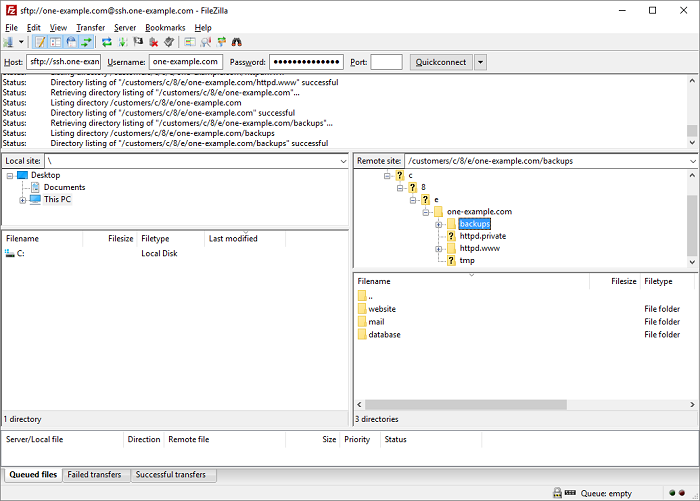

Below, we will talk in detail about what an FTP client is, why you need one, how they work and features to look for in an FTP solution. If that is a question that’s also keeping you up at night (and why wouldn’t it!?) you have come to the right place. However, what are the best FTP clients for WordPress users? Besides a good code editor and the number for their hosting provider’s tech support on speed dial, an FTP client is definitely among them. Note that the command-line parameter /console was not specified, what makes WinSCP.exe not show the console window, not to disturb you while you are using your workstation.There are a few things that should be part of the WordPress developer’s toolbox. "C:\Program Files (x86)\WinSCP\WinSCP.exe" /log=c:\path\winscp.log /command "open "put d:\examplefile.txt /home/user/" "exit" The resulting command may look like (as a single line):.In advanced properties add appropriate WinSCP command-line parameters to execute the scripting commands you need (typically you will use /script or /command parameters).Browse for WinSCP.exe executable, and setup other task properties (like period of execution).Go to Windows Start Menu > Settings > Control Panel > Scheduled Tasks > Add Scheduled Task.When done, click Next, review your options and confirm with Finish.If your script uses local paths relative to the script path or WinSCP executable path, specify the respective path in Start in field.You can have WinSCP generate the command-line template for you. Note that the command-line parameter /console was not specified, which makes WinSCP.exe not show the console window, so as not to disturb you while you are using your workstation. log=c:\path\winscp.log /command "open "put d:\examplefile.txt /home/user/" "exit" The resulting arguments may look like (as a single line):.You should also add /log parameter to turn on session logging to file.In Add arguments add appropriate WinSCP command-line parameters to execute the scripting commands you need (typically you will use /script or /command parameters).For task action, select Start a program and click Next.Choose when the task should be run and click Next.In the Task Scheduler menu go to Action > Create Basic Task.In Control Panel, go to System and Security > Administrative Tools > Schedule Tasks. Windows 7: Go to Windows Start Menu > Control Panel.Windows 8.1: Right click Windows Start button and select Control Panel.Or just type “Task Scheduler” into the search box. Windows 10: Go to Windows Start Menu > Windows Administrative Tools > Task Scheduler.Windows 11: Go to Windows Start Menu > All apps > Windows Tools > Task Scheduler.


 0 kommentar(er)
0 kommentar(er)
